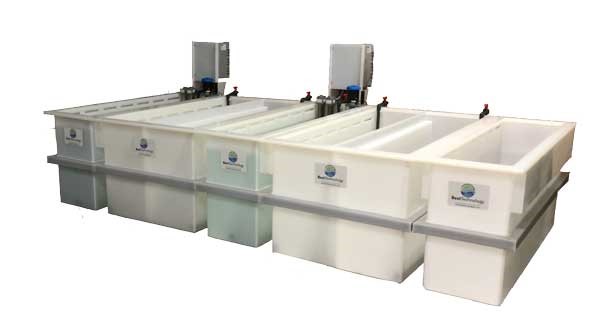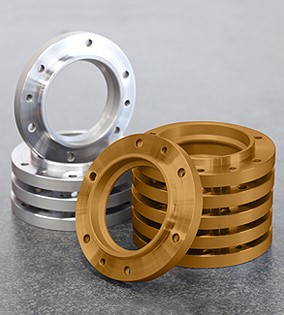
Chemical Conversion Coating of Aluminium alloys
Jargon of Chemical Conversion Coating
Before we get into the description, it is better to know the jargon used in the process
- Hexavalent Chromium – refers to the chemical compounds that contain the element chromium in the +6-oxidation state. This is toxic.
- Trivalent Chromium – refers to the chemical compounds that contain the element chromium in the +3-oxidation state. This is non-toxic
Chemical Conversion Coating of Aluminium alloys
Chemical Conversion Coating (CCC) or Chem film or Chromate Conversion Coating, is a process where a protective layer is created on the exposed surfaces of the parts, through a chemical reaction with the prescribed chemicals in the bath. Similar to anodizing, the protective layer not only imparts corrosion resistance to the surface of the part but also improves the adhesion of primer or paint on to the part’s surface. Unlike anodizing, this process is non-electrolytic and also a variant of this coating can offer less electrical resistance which is critical for some applications. Depending on the process, the colour of the part’s surface can be clear or iridescent blue or iridescent gold to brown. This process is also referred to by some trademark names like AlodineTM, IriditeTM etc. CCC is applied either on to the entire part’s surface or locally.
Depending on the oxidation state of Chromium and depending on the properties of the coating, the process is categorized into types and classes, as follows:
- Type-I – the process chemicals and the coating contain chromium in the +6-oxidation state.
- Type-II - the process chemicals and the coating contain chromium in the +3-oxidation state and so is hexavalent-chromium-free and non-toxic
- Class-1A – maximum protection against corrosion, painted or un-painted
- Class-3 – for protection against corrosion where low electrical resistance is required
CCC can be accomplished by immersion, brushing and spraying. Immersion is the most common method and is utilized for bulk processing. Immersion method comprises of dipping the part’s surface in a series of various baths in tanks. For the process to be efficient and effective, parts need to be jigged to minimize part to part & part to jig contact. The movement of jigs can be achieved through a transporter. The steps involved in the CCC process are:
- Cleaning: to ensure the parts’ surface is free of dirt, oil or any residue from the previous manufacturing processes, is removed
- Etching: to dissolve a thin layer from the part’s surface to remove oxides or other residues
- Deoxidizing / De-smut: to remove oxides, other residues and to activate the part’s surface so that CCC is effective
- Chemical Conversion Coating: to create a thin, uniform and continuous coating on the exposed part’s surface by dipping it in a bath of specific chemical composition, pH, temperature and for the prescribed duration
- Drying: to ensure removal of water from the part’s surface
Part’s surface needs to be rinsed in water after each of the steps 1 to 4, to ensure it is free of the chemicals of the respective bath.
Typical CCC tank line:
 Image source: besttechnologyinc.com
Image source: besttechnologyinc.com
Typical CCC parts:
 Image source: gsmp.com
Image source: gsmp.com
Process Control
The critical process parameters of CCC are:
- Cleanliness of the part’s surface and bath
- Chemical concentration & pH
- Temperature of the bath
- Dwell time in the bath
The effectiveness of the coatings can be checked by conductivity test, salt spray test etc.
Reference Standards for the Process and Testing
MIL-DTL-5541
This specification covers chemical conversion coatings formed by the reaction of chemical conversion materials with the surfaces of aluminium and aluminium alloys.
MIL-DTL-81706
This specification covers chemical conversion materials used in the formation of coatings by the reaction of the material with the surfaces of aluminium and aluminium alloys.
ASTM-B-117
This specification covers Standard Practice for Operating Salt Spray (Fog) Apparatus
